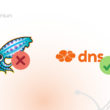In recent years, the growing wave of cyber attacks has left companies of all sizes and sectors on alert. However, small and medium -sized SMEs have been especially vulnerable, facing a disproportionate amount of attacks. Thus, the consequences of these attacks can be devastating, affecting not only operations, but also leading many companies to close their doors. By 2023, the check -off Software Technologies report revealed a 38% global increase in the number of attacks over the previous year.
There are many factors that contribute to the vulnerability of SMEs , such as the lack of appropriate resources and knowledge. Often managers of these companies believe that, because they are smaller, they are not attractive to cybercriminals , a perception that puts them in a high risk position.
Given this scenario, it is essential that SMEs understand the seriousness and great impact of cyber threats and adopt measures to protect themselves. This article explores the impact of cyber attacks, the reasons for vulnerability, and what are the best actions to strengthen digital defense.
Increased cyber attacks on SMEs
Cyber attacks have hardly reached SMEs, causing impacts that go far beyond financial loss. Interruption of activities is one of the main consequences, as many of these companies depend on digital systems to continue working. That is, an attack aimed at these systems can lead to complete paralysis of the organization, for days or even weeks. Kaspersky 's PME threats against PMES , in the last 12 months, SMEs in Brazil have faced more than 192 million cyber attack attempts, resulting in an average of 365 attacks per minute.
In recent years, there has been a substantial increase in the number of cyber attacks targeted to small and medium enterprises. This is partly due to the fact that digital criminals are increasingly sophisticated and use smarter technologies to identify and explore vulnerabilities in the networks of these companies, such as attack automation, artificial intelligence for malicious content generation and deepfakes.
In addition, Covid-19 pandemic has accelerated the digitization of various industries and companies, increasing the attack surface. With increased remote work and migration of systems to the cloud environment, the SMEs were even more exposed to these attacks. Without a quality infrastructure to support this transition, many of these companies have become easier for cybercriminals.
Thus, the current scenario shows that cyber attacks are not just a problem with large companies. With the growing use of technologies, SMEs should recognize that they are priority targets for cybercriminals and should invest in robust defenses to avoid becoming future victims.
Definition of cyber attacks
Cyber attacks are malicious attempts to access, change or corrupt confidential information from companies or users. These actions are carried out by cybercriminals to divert valuable information, cause system interruptions and even extort victims' money. That is, these attacks can be implemented in a variety of ways, from direct invasions to the use of malicious software that infiltrate the system in a concealed manner.
Simply put, cyber attacks exploit technological or human vulnerabilities to achieve their goals. Lack of software update, poorly trained employees, or the use of weak passwords is breaches that cybercriminals use to invade business networks and cause numerous damage.
Due to the most limited infrastructure, small and medium enterprises are targeted especially vulnerable to cyber attacks . Thus, regardless of the origin of the attack, the impact can be devastating to companies that are not prepared to deal with these risks.
Examples of different types of attacks
Cyber attacks may vary in complexity and objective. One of the most common types of attacks is phishing , where cybercriminals send fake emails with malicious links or attachments. The goal is to engage the victims and make them provide confidential information.
Another very common example is ransomware , one of the biggest threats for SMEs. In this type of attack, cybercriminals block access to company systems and require payment of a redemption for data release. The financial impact of these attacks can be catastrophic, making many companies unable to pay or recover their data. Recent research has particularly highlighted ransomware attacks. According to data from the CyberSecurity Ventures report , in 2023 there was a 25% projected increase in attacks compared to 2022.
Denial attacks ( DDOS) , in turn, are approaches implemented to overload company servers, causing interruptions in operations. This process can lead to loss of clients, damage to reputation and, in some cases, result in legal penalties, especially if the company cannot ensure the continuity of its service.
Recent statistics and data
Considering the great impact of these attacks on companies of various sizes and segments, researchers have conducted many investigations to evaluate the extent of the problem. According to the Sophos report , more than three quarters of cyber incidents were focused on small and medium enterprises in 2023, and ransomware the most widely used approach.
Lockbit criminal group was responsible for the largest amount of ransomware incidents aimed at small and medium enterprises, with 27.59% of approaches. The Sophos report also pointed out that there was a major evolution in the tactics used by ransomware operators, such as increasing the use of remote encryption , which refers to the use of cryptographic techniques to protect information that is being stored or transmitted outside the physical place where they were originally generated.
According to data collected by Kaspersky , between October 2022 and October 2023, there were 192 million attempts at cyber attacks blocked against small and medium enterprises in Brazil, with 526 blocks performed per day.
The highest incidence of cyber attacks against small and medium enterprises compared to larger companies due to the perception that they have weaker defenses . Even with lower volume of data, cybercriminals know that SME safety infrastructure is usually lower, facilitating the execution of attacks. In many cases, large companies have safety teams, while SMEs implement simpler solutions.
The role of governance and compliance
Governance and compliance with current cyber security legislations and regulations are indispensable for protecting SMEs. There are specific regulations that companies should follow to ensure customer data protection and privacy, such as the General Data Protection Law (LGPD) .
Being in accordance not only helps to avoid sanctions and fines, but also strengthens the organization's safety stance. In addition, cyber security governance involves the development of a clear structure of responsibilities and processes within the company. Defining papers for security management, implementing policies and conducting regular audits are practical to ensure the correct application of security measures.
In the case of SMEs, compliance with standards, such as LGPD and GDPR , is critical not only to avoid penalties, but also to strengthen the confidence of consumers and business partners. Adherence to these standards demonstrates the commitment to the security and privacy of the information.
Future trends in cybersecurity for SMEs
As technology continues to evolve, threats and cybersecurity solutions also develop. An emerging trend is the use of artificial intelligence and machine learning to contribute to the detection and response to threats more accurately and efficiently. These technologies have the potential to bring significant improvements to SME safety strategy, helping these companies to identify attacks more effectively.
Another trend is the importance of safety in the remote work environment . With the increase in the implementation of this type of work, it is crucial for SMEs to adopt more specific security measures to protect information and networks from employees who work outside the company's environment. This includes the use of VPNs , safe collaboration tools and more strict remote access policies.
Why are SMEs more vulnerable?
As we said earlier, there is a great perception that small and medium enterprises are more vulnerable to cyber attacks. This perception is quite realistic and based on the fact that there is a lower investment in security resources and a lower concern with the implementation of more robust measures.
To better understand how this impact is related to factors inherent to SMEs, here are the main causes of vulnerabilities:
LACK OF RESOURCES AND KNOWLEDGE
One of the main reasons why SMEs are most vulnerable to cyber attacks is the lack of resources to invest in more robust cybersecurity solutions. Large corporations have higher budgets to implement sophisticated and efficient tools, as well as hiring experts and conducting regular audits. On the other hand, small and medium -sized companies face financial limitations and need to prioritize their investments.
In addition, the lack of specialized knowledge is also a factor that puts SME at higher risk. Many companies end up underestimating the potential of attacks, believing that they are not the target of cybercriminals, making it easier for these agents to explore vulnerabilities. It is important to remember that many SME do not even implement the most basic security measures, such as regular backups , firewalls and multifactorial authentication . This combination of limitations makes SMEs especially susceptible to attacks that could be easily prevented.
Attractive targets for attackers
For cybercriminals, SMEs are seen as easy and profitable targets . They know that these companies do not usually invest in the same defenses as large corporations and, therefore, focus their efforts on exploring these vulnerabilities. This makes SMEs more frequent targets, as cybercriminals find less resistance.
Many successful SCE attacks involve relatively simple practices on the part of cybercriminals, such as using a strategy for stealing credentials or applying ransomware to block systems and require a ransom payment. Although they seem simple, these attacks can be devastating to small and medium enterprises as they go unnoticed until the impact has already caused damage.
Successful attacks against small and medium-sized companies often make these organizations pay large amounts of rescue to recover access to systems. According to the IBM Security Cost of A Data Breach Report 2024 , the average global cost of a data violation is approximately $ 4.45 million for companies.
The importance of education and training
Employee education and training are fundamental processes to increase protection against cyber attacks. Many successful attacks occur due to human failures, such as opening malicious links or using very weak passwords. Empowering employees to recognize phishing and other threats can help significantly reduce the risk of safety impairment.
The implementation of a cyber security culture within the company is crucial to increasing protection. By the time all employees understand the importance of cybersecurity and implement more efficient practices, the company's resistance will be the better resistance to the attacks. Investing in cyber education can also include hiring specialized consultants to help develop personalized training.
This approach can be particularly useful for SMEs that need to understand specific threats that can affect their sectors and implement best practices to combat them.
Challenges for the implementation of security measures
The implementation of effective security measures represents a considerable challenge for Small and Medium Enterprises (SMEs), which often face a number of obstacles when trying to protect their systems and data. We can classify these challenges in several main areas:
1. Lack of specialized resources
One of the main challenges is the lack of teams dedicated exclusively to information technology . Many SMEs do not have professionals specialized in cyber security, which can make it difficult to implement and effective protection measures, often meaning that cyber security can be neglected or inadequately approached, with potentially serious consequences for the company. Work overload and lack of specialized knowledge can cause gaps in protection , exposing the company to unnecessary risks.
2. Budget restrictions
Another significant difficulty is the budgetary limitation. SMEs usually operate with tighter budgets, which can restrict their options for the adoption of sophisticated security solutions. Investing in cutting -edge technology can be seen as a luxury rather than a need, leading some companies to choose cheaper solutions or even postpone the implementation of safety measures, resulting in inappropriate protection and increasing the risk of cyber attacks.
3. Complexity of security solutions
In addition to resource and budget issues, the complexity of security solutions available on the market can be an extra challenge for SME safety strategy. Many advanced solutions require specialized technical knowledge to be configured and kept correctly , and for a SME without a dedicated IT team, understanding and implementing these solutions can be a complex task.
4. Constant evolution of threats
Cyber threats are constantly evolving, with new types of attacks and vulnerabilities regularly emerging and making victims companies from various segments. To maintain security, PMES need to track these changes and keep their protective measures up to date. This requires constant surveillance and adaptation to new threats, which can be challenging for companies with limited resources and no dedicated security team.
5. Need for training and awareness
In addition to technical and financial issues, awareness and training of employees are crucial strategies for cyber security. Many attacks are successful due to human errors, such as clicking on malicious links or using weak passwords. To combat these risks, it is necessary to implement training and awareness programs to educate employees about best security practices. However, for SMEs, this can mean an additional investment of time and especially resources.
Measures to protect SME from cyber attacks
To strengthen security strategy and help avoid most cyber attacks with more efficiency and intelligence, there are some strategies that can help these companies. Implementing differentiated solutions and ensuring a culture aimed at protecting information is an approach that can make all the difference to these companies.
Cyber defense technologies
There are several more affordable technological solutions that can help SMEs protect themselves against cyber attacks. Tools such as firewalls , antiviruses , and intrusive detection systems are more accessible than ever and can help these companies implement an extra layer of protection against improper access.
The implementation of multifactorial authentication is also a key approach to small and medium enterprises. This technology adds a safety layer and ensuring that even when someone compromises credentials, the cybercriminal still needs extra information to access the system.
The combination of implementing more robust technological solutions with proper training can help significantly reduce the risk of successful attacks. It is important to see cyber security as an essential investment to maintain business continuity, just like any other within the company.
Internal policies and procedures
The implementation of a clear and transparent security policy is critical to protecting small and medium enterprises from cyber attacks. These policies should include all rules on the use of strong passwords, the importance and frequency of software updates and what are the procedures to be implemented in the case of suspicious activities.
In addition, they also need to develop incident response procedures . This protocol includes the creation of an action plan to deal with cyber attacks, ensuring that everyone knows how to quickly act to mitigate damage and restore operations as soon as possible. These preventive and reactive measures are crucial to ensure that if an attack occurs, everyone is prepared to deal with this situation as best as possible, preventing the company from suffering even greater damage.
Monitoring and Audit
Continuous monitoring is indispensable for effective protection against cyber threats as it allows early detection of suspicious activities and potential safety incidents. Implementing real -time monitoring tools can help identify anomalous patterns and signs of impairment before they cause significant damage.
Monitoring solutions , such as Information Management Systems and Security Events (SIEM), can add information from different sources, offering a comprehensive view of network activities and warning of unexpected behaviors or potential attacks. Effective monitoring helps to ensure that the company's safety depends not only on reactive answers, but on constant and proactive surveillance.
In addition to monitoring the digital environment in real time, periodic security audits are essential to assess the effectiveness of existing protection measures. Audits help identify vulnerabilities, security policy failures and areas that need improvements. During an audit, experts review company system configurations , current security policies and operational practices to ensure that they are in accordance with safety standards.
Case Study: PMES affected by cyber attacks
Nowadays, SMEs are increasingly frequent targets of cyber attacks due to increasing sophistication and persistence of online threats. Although these companies often do not have the visibility or resources that large corporations have, their vulnerability may have equally devastating consequences.
Through real case analysis, we seek to better understand the common vulnerabilities that affect SME and identify the best practices and defense strategies that can be applied to strengthen the cyber security of these organizations.
Stories of sags victims of attacks
There are numerous reports of small and medium -sized companies that have been victims of cyber attacks, often with devastating consequences. These examples highlight the great importance of protecting SMEs against cyber attacks. It is essential to understand that the consequences go far beyond immediate financial losses, also impacting the company's reputation and customer confidence , which can be fatal to smaller businesses.
In August 2024, Jacarezinho City Hall suffered a substantial cyber attack, resulting in the encryption of essential files and the interruption of various services. This ransomware attack involved data encryption and the requirement of a cryptocurrency payment for information release.
Type of attack
The incident was characterized by a ransomware attack , which compromised the city's information technology systems. The invaders encrypted critical data and requested the payment of redemption, which directly affected the operation of public services and the ability to perform essential administrative tasks.
Immediate consequences
As a result of the approach, several online city services were temporarily suspended, generating difficulties for the population that needed to access documents and services. The interruption affected the efficiency of processes and the availability of information for citizens.
Response to the incident
After the attack, the city quickly mobilized specialized cyber security teams to deal with the situation. They started an emergency response to isolate committed systems during attack and start data recovery. Administration has also notified the competent authorities and is collaborating with security agencies to investigate the origin and reasons for the attack.
Prevention measures and future actions
The incident showed the importance of strengthening digital security within public administration. City Hall is now focused on updating its safety practices, including the implementation of more robust protocols, regular training training and investing in new cyber protection technologies.
Learning for other organizations
This event serves as a warning to other organizations and companies about the need to have a robust and consolidated cyber security strategy. Regular backups, conducting vulnerabilities tests and continuous digital security education are recommended practices to reduce the chance of future attacks.
Recovery and Resilience
After a cyber attack, many SMEs face a long trajectory to completely recover. However, some companies adopt effective strategies to overcome this crisis and become more resilient, such as the implementation of regular backups , hiring cybersecurity and the training of employees.
Many companies also make important changes in their internal policies, ensuring the implementation of more efficient preventive measures to prevent the incidence of further attacks. These steps are fundamental to ensure that these companies can recover and avoid future attacks.
In short, small and medium enterprises are becoming increasingly frequent targets of cyber attacks due to their vulnerability and lack of preparation. Therefore, it is essential that companies invest in safety solutions, covering both organizational culture and technologies necessary to protect their operations and information. To ensure business continuity, it is essential that companies remain attentive to current threats and are prepared to respond to incidents with agility and effectiveness.
To strengthen your company's cyber security and protect your data, count on Lumiun. Lumiun offers advanced safety solutions that help identify and mitigate threats, ensuring robust and effective protection for your business. Do not leave your company vulnerable to cyber attacks - contact Lumiun and find out how we can help keep your operations safe and resilient.











